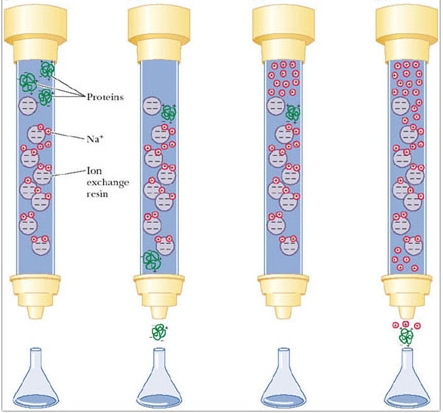Protein purification is the process of separating protein fractions of a specific purpose from tissues, cells, or protein mixtures. Protein purification should not only promote a strong purity of the isolated protein, but also maintain the biological activity of the protein. Therefore, it is necessary to design one or more combination purification schemes according to different protein properties. The main strategy for protein purification is to exploit the similarities and differences between different proteins. On the basis of the similarity between proteins, non-protein material can be removed, and then the target protein can be separated based on the protein differences. Especially with the rapid development of genetic engineering technology, although many proteins are expressed by genetic recombination, the level of protein purification is directly related to the purity and activity of the protein. Therefore, protein purification remains an important topic in modern biotechnology.
Objective
On the one hand, the isolation and purification of proteins are particularly important for the in-depth study of the structure and function of proteins, and on the other hand, the separation and purification of proteins are also directly related to the application effect of proteins. Therefore, protein purification plays an important role in the research and application of biological science, and protein separation and purification technology is also a key technology in the biological industry.
The way
The principle of protein purification is to separate the target protein with reasonable efficiency, rate, yield, and purity while maintaining its biological activity and chemical integrity. The main steps include selection of experimental materials, pretreatment, protein extraction, crude protein classification, fine protein classification and protein identification.
The purification process must pay attention to: 1 to minimize the impact on protein activity, such as to prevent too high or too low pH, high temperature and heavy metal effects; 2. Operate at low temperature; 3. Try to keep the leading level of protein content in the sample.
Classification of
Protein purification can be classified according to the type of purification method:
I. Precipitation method, including salt deposition, using salt ions to destroy the solidified layer on the surface of the protein, exposing the hydrophobic area, and then deposition to achieve the purpose of preliminary purification; Organic deposition, using organic solvents to reduce water activity, destroys the coagulated film on the protein surface, leading to protein precipitation. Precipitation is a mild purification method, but the purity is not high and can be used as a primary purification process.
Two, dialysis method, including dialysis bag and ultrafiltration method. By dialysis and ultrafiltration, small molecular impurities can be eliminated, and the protein solution can also be replaced.
3. Chromatographic methods include molecular sieve gel chromatography, ion exchange chromatography, affinity chromatography (metal chelating affinity chromatography, protein A/G chromatography, receptor protein, substrate, etc.), hydrophobic chromatography, reverse chromatography and high performance liquid chromatography. In order to achieve better results, a combination of two chromatographic methods, such as affinity chromatography and ion exchange chromatography, is often required.
In addition to the above methods, there are many other purification methods, such as density gradient centrifugation, which are suitable for the production of high-purity proteins, but require higher experimental conditions. Protein crystals are suitable for biological structure analysis, such as X-transmission.
Post time: Feb-21-2024

